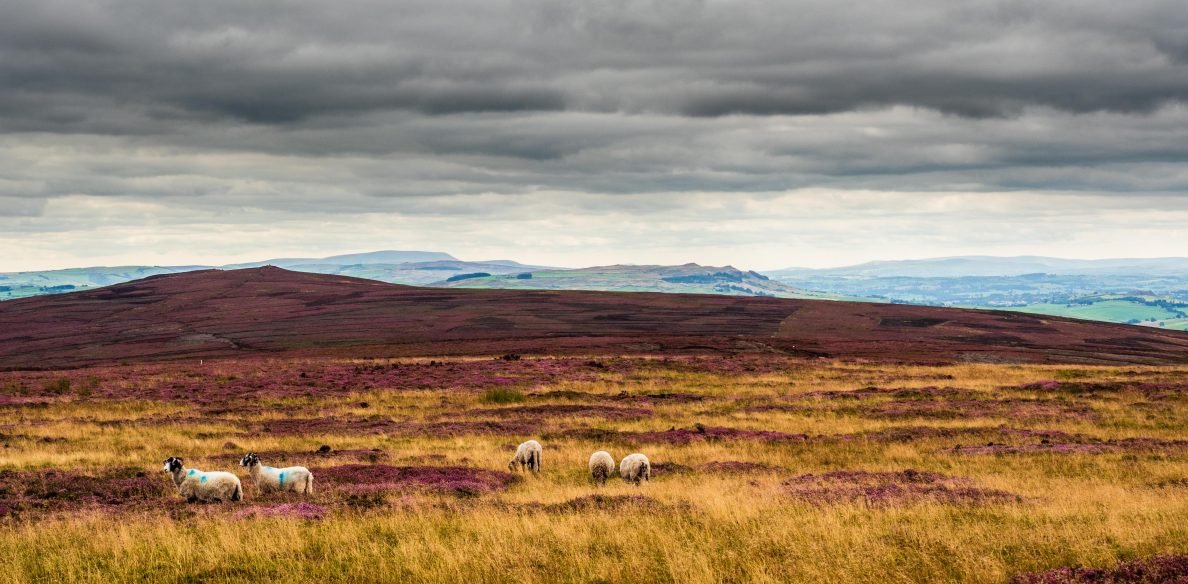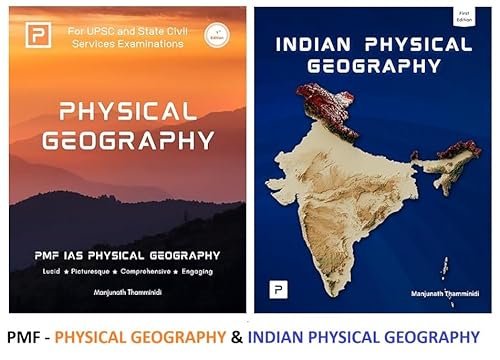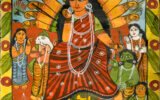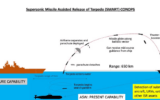
January 24 2024 Prelims Practice Questions (PPQs)
Subscribe to Never Miss an Important Update! Assured Discounts on New Products!
Must Join PMF IAS Telegram Channel & PMF IAS History Telegram Channel
- These Prelims Practice Questions (PPQs) are based on PMF IAS Daily Current Affairs.
- The daily current affairs are uploaded every day by 8 PM. You can read the Daily Current Affairs from here.
- Subscribers of the “Current Affairs” course can Download Daily Current Affairs in PDF/DOC from here.
[Quiz] Daily Prelims Practice Questions (PPQs) – January 24 2024
0 of 8 questions completed
Questions:
- 1
- 2
- 3
- 4
- 5
- 6
- 7
- 8
Information
These MCQs are based on PMF IAS Daily Current Affairs. The daily current affairs are uploaded every day by 8 PM. You can read the Daily Current Affairs from here. Subscribers of the “Current Affairs” course can Download Daily Current Affairs in PDF/DOC from here.
You have already completed the Test before. Hence you can not start it again.
Test is loading...
You must sign in or sign up to start the Test.
You have to finish following quiz, to start this Test:
Your results are here!! for" [Quiz] Daily Prelims Practice Questions (PPQs) – January 24 2024 "
0 of 8 questions answered correctly
Your time:
Time has elapsed
Your Final Score is : 0
You have attempted : 0
Number of Correct Questions : 0 and scored 0
Number of Incorrect Questions : 0 and Negative marks 0
| Average score |
|
| Your score |
|
-
Not categorized
You have attempted: 0
Number of Correct Questions: 0 and scored 0
Number of Incorrect Questions: 0 and Negative marks 0
| Pos. | Name | Entered on | Points | Result |
|---|---|---|---|---|
| Table is loading | ||||
| No data available | ||||
- 1
- 2
- 3
- 4
- 5
- 6
- 7
- 8
- Answered
- Review
-
Question 1 of 8
1. Question
Q1. {A&C – Architecture} Consider the following statements:
- The Ram Mandir Project has a lower carbon footprint.
- Sandstone is a sedimentary rock that can be of any colour.
- Granite is an igneous rock which has low thermal expansion.
- The Makrana marble is the first stone resource from India and Asia to get the Global Heritage Stone Resource (GHSR) status.
How many of the above statement(s) is/are correct?
Correct
Explanation
Statement 1 is correct
- The Ram Mandir project uses traditional construction materials, aligning with age-old building practices.
- It does not use iron or steel (Rusting results in a shorter life span).
- With no use of iron and steel, it has a lower carbon footprint.
Statement 2 is correct
- Sandstone is a sedimentary rock composed mainly of sand-sized silicate grains.
- It may be of any colour due to impurities within the minerals.
- Due to its durability, strength, and aesthetic appeal, it has been used in construction for many years.
- Source: Rajasthan (~90% deposits), Andhra Pradesh, Assam, Bihar, Gujarat, Haryana, Madhya Pradesh, Meghalaya, Mizoram, Karnataka, Odisha, Punjab, Uttar Pradesh, Tamil Nadu and West Bengal.
Statement 3 is correct
- Granite is an igneous rock formed by slow crystallisation of magma beneath the Earth’s surface (plutonic).
- Mohs hardness scale (used for hardness of minerals) rates it as 6-7 out of 10, making it very durable.
- It has low porosity (no water absorption and no weathering), acid resistance and thermal stability.
- Owing to the way it was formed, it is very strong, extremely homogeneous, finely porous and has a tight structure. Because of these properties, granite has low thermal expansion and conductivity.
- Source: Odisha, Tamil Nadu, Karnataka, Jharkhand, Chhattisgarh, Rajasthan, Telangana, Andhra Pradesh.
Statement 4 is correct
- Known for its fine quality, marble from Makrana in Rajasthan has become Asia’s first Global Heritage Stone Resource (GHSR), as confirmed by the International Union of Geological Sciences (IUGS).
- The Makrana marble is the first stone resource from India and Asia to get the GHSR status on July 19, 2019, confirms IUGS, an international non-governmental organisation devoted to international cooperation in the field of geology.
- Makrana marble is a metamorphic rock, found in a single deposit in India, which has a range of about 90–98% Calcium Carbonate. The marble is found only in Makrana, a small town situated 110 km west of Jaipur.
- The renowned sites where Makrana marble is used are Humayun’s Tomb in New Delhi, Dukhnivaran Sahib Gurdwara, Ludhiana, Sheikh Zayed Mosque in Abu Dhabi and the Victoria Memorial in Kolkata.
Answer: (d) All; Difficulty Level: Medium
Incorrect
Explanation
Statement 1 is correct
- The Ram Mandir project uses traditional construction materials, aligning with age-old building practices.
- It does not use iron or steel (Rusting results in a shorter life span).
- With no use of iron and steel, it has a lower carbon footprint.
Statement 2 is correct
- Sandstone is a sedimentary rock composed mainly of sand-sized silicate grains.
- It may be of any colour due to impurities within the minerals.
- Due to its durability, strength, and aesthetic appeal, it has been used in construction for many years.
- Source: Rajasthan (~90% deposits), Andhra Pradesh, Assam, Bihar, Gujarat, Haryana, Madhya Pradesh, Meghalaya, Mizoram, Karnataka, Odisha, Punjab, Uttar Pradesh, Tamil Nadu and West Bengal.
Statement 3 is correct
- Granite is an igneous rock formed by slow crystallisation of magma beneath the Earth’s surface (plutonic).
- Mohs hardness scale (used for hardness of minerals) rates it as 6-7 out of 10, making it very durable.
- It has low porosity (no water absorption and no weathering), acid resistance and thermal stability.
- Owing to the way it was formed, it is very strong, extremely homogeneous, finely porous and has a tight structure. Because of these properties, granite has low thermal expansion and conductivity.
- Source: Odisha, Tamil Nadu, Karnataka, Jharkhand, Chhattisgarh, Rajasthan, Telangana, Andhra Pradesh.
Statement 4 is correct
- Known for its fine quality, marble from Makrana in Rajasthan has become Asia’s first Global Heritage Stone Resource (GHSR), as confirmed by the International Union of Geological Sciences (IUGS).
- The Makrana marble is the first stone resource from India and Asia to get the GHSR status on July 19, 2019, confirms IUGS, an international non-governmental organisation devoted to international cooperation in the field of geology.
- Makrana marble is a metamorphic rock, found in a single deposit in India, which has a range of about 90–98% Calcium Carbonate. The marble is found only in Makrana, a small town situated 110 km west of Jaipur.
- The renowned sites where Makrana marble is used are Humayun’s Tomb in New Delhi, Dukhnivaran Sahib Gurdwara, Ludhiana, Sheikh Zayed Mosque in Abu Dhabi and the Victoria Memorial in Kolkata.
Answer: (d) All; Difficulty Level: Medium
Unattempted
Explanation
Statement 1 is correct
- The Ram Mandir project uses traditional construction materials, aligning with age-old building practices.
- It does not use iron or steel (Rusting results in a shorter life span).
- With no use of iron and steel, it has a lower carbon footprint.
Statement 2 is correct
- Sandstone is a sedimentary rock composed mainly of sand-sized silicate grains.
- It may be of any colour due to impurities within the minerals.
- Due to its durability, strength, and aesthetic appeal, it has been used in construction for many years.
- Source: Rajasthan (~90% deposits), Andhra Pradesh, Assam, Bihar, Gujarat, Haryana, Madhya Pradesh, Meghalaya, Mizoram, Karnataka, Odisha, Punjab, Uttar Pradesh, Tamil Nadu and West Bengal.
Statement 3 is correct
- Granite is an igneous rock formed by slow crystallisation of magma beneath the Earth’s surface (plutonic).
- Mohs hardness scale (used for hardness of minerals) rates it as 6-7 out of 10, making it very durable.
- It has low porosity (no water absorption and no weathering), acid resistance and thermal stability.
- Owing to the way it was formed, it is very strong, extremely homogeneous, finely porous and has a tight structure. Because of these properties, granite has low thermal expansion and conductivity.
- Source: Odisha, Tamil Nadu, Karnataka, Jharkhand, Chhattisgarh, Rajasthan, Telangana, Andhra Pradesh.
Statement 4 is correct
- Known for its fine quality, marble from Makrana in Rajasthan has become Asia’s first Global Heritage Stone Resource (GHSR), as confirmed by the International Union of Geological Sciences (IUGS).
- The Makrana marble is the first stone resource from India and Asia to get the GHSR status on July 19, 2019, confirms IUGS, an international non-governmental organisation devoted to international cooperation in the field of geology.
- Makrana marble is a metamorphic rock, found in a single deposit in India, which has a range of about 90–98% Calcium Carbonate. The marble is found only in Makrana, a small town situated 110 km west of Jaipur.
- The renowned sites where Makrana marble is used are Humayun’s Tomb in New Delhi, Dukhnivaran Sahib Gurdwara, Ludhiana, Sheikh Zayed Mosque in Abu Dhabi and the Victoria Memorial in Kolkata.
Answer: (d) All; Difficulty Level: Medium
-
Question 2 of 8
2. Question
Q2. {A&C – Sites} Consider the following statements about Ayodhya:
- The older name for the city is Saketa.
- Fa-Hian mentioned multiple Buddhist monasteries in Ayodhya.
- The first excavation of Ayodhya was carried out under Archaeologist Hasmukh Dhirajlal Sankalia.
- Ayodhya is located on the banks of the Saryu River which is the largest tributary of the Bhagirathi River.
How many of the above statement(s) is/are correct?
Correct
Explanation
Statement 1 is correct
- “Ayodhya” means “not to be fought”. Atharvaveda and Jain literature Adi Purana refers to it as the unconquerable city of gods.
- “Saketa” is the older name for the city as per the Sanskrit, Jain, Buddhist, Greek and Chinese sources.
- Ancient Indian Sanskrit-language epics, Ramayana and the Mahabharata, mention a legendary city called Ayodhya.
- Epics mention it as the capital of the Ikshvaku kings of Kosala, including Lord Ram.
- It is also mentioned in Kalidasa’s Raghuvamsha.
Statement 2 is correct
- Ayodhya has a Buddhist Connection as Chinese Buddhist monk Fa-Hian (5th century CE) mentioned multiple buddhist monasteries in Ayodhya.
- Ashoka is also believed to have constructed a stupa in Ayodhya.
- Samyutta Nikaya and the Vinaya Pitaka mention the city of Saketa and a big river near it.
- The later Buddhist text Mahavastu describes Saketa as the seat of the Ikshvaku king Sujata.
Statement 3 is incorrect
- The first excavation of Ayodhya was carried out in the year 1976-77 under eminent archaeologist BB Lal, who was the director general of the Archaeological Survey of India (ASI) from 1968 to 1972.
Statement 4 is incorrect
- Ayodhya is situated in the Indo-Gangetic Plain with a subtropical monsoon climate.
- It is located on the southern bank of the Saryu River.
- Saryu is the largest tributary of the Mahakali (Sharda) River, meeting it at Pancheshwar at the India—Nepal border.
- It is also referred to as Lower Ghaghra, which flows through Ayodhya.
Answer: (b) Only two; Difficulty Level: Medium
Incorrect
Explanation
Statement 1 is correct
- “Ayodhya” means “not to be fought”. Atharvaveda and Jain literature Adi Purana refers to it as the unconquerable city of gods.
- “Saketa” is the older name for the city as per the Sanskrit, Jain, Buddhist, Greek and Chinese sources.
- Ancient Indian Sanskrit-language epics, Ramayana and the Mahabharata, mention a legendary city called Ayodhya.
- Epics mention it as the capital of the Ikshvaku kings of Kosala, including Lord Ram.
- It is also mentioned in Kalidasa’s Raghuvamsha.
Statement 2 is correct
- Ayodhya has a Buddhist Connection as Chinese Buddhist monk Fa-Hian (5th century CE) mentioned multiple buddhist monasteries in Ayodhya.
- Ashoka is also believed to have constructed a stupa in Ayodhya.
- Samyutta Nikaya and the Vinaya Pitaka mention the city of Saketa and a big river near it.
- The later Buddhist text Mahavastu describes Saketa as the seat of the Ikshvaku king Sujata.
Statement 3 is incorrect
- The first excavation of Ayodhya was carried out in the year 1976-77 under eminent archaeologist BB Lal, who was the director general of the Archaeological Survey of India (ASI) from 1968 to 1972.
Statement 4 is incorrect
- Ayodhya is situated in the Indo-Gangetic Plain with a subtropical monsoon climate.
- It is located on the southern bank of the Saryu River.
- Saryu is the largest tributary of the Mahakali (Sharda) River, meeting it at Pancheshwar at the India—Nepal border.
- It is also referred to as Lower Ghaghra, which flows through Ayodhya.
Answer: (b) Only two; Difficulty Level: Medium
Unattempted
Explanation
Statement 1 is correct
- “Ayodhya” means “not to be fought”. Atharvaveda and Jain literature Adi Purana refers to it as the unconquerable city of gods.
- “Saketa” is the older name for the city as per the Sanskrit, Jain, Buddhist, Greek and Chinese sources.
- Ancient Indian Sanskrit-language epics, Ramayana and the Mahabharata, mention a legendary city called Ayodhya.
- Epics mention it as the capital of the Ikshvaku kings of Kosala, including Lord Ram.
- It is also mentioned in Kalidasa’s Raghuvamsha.
Statement 2 is correct
- Ayodhya has a Buddhist Connection as Chinese Buddhist monk Fa-Hian (5th century CE) mentioned multiple buddhist monasteries in Ayodhya.
- Ashoka is also believed to have constructed a stupa in Ayodhya.
- Samyutta Nikaya and the Vinaya Pitaka mention the city of Saketa and a big river near it.
- The later Buddhist text Mahavastu describes Saketa as the seat of the Ikshvaku king Sujata.
Statement 3 is incorrect
- The first excavation of Ayodhya was carried out in the year 1976-77 under eminent archaeologist BB Lal, who was the director general of the Archaeological Survey of India (ASI) from 1968 to 1972.
Statement 4 is incorrect
- Ayodhya is situated in the Indo-Gangetic Plain with a subtropical monsoon climate.
- It is located on the southern bank of the Saryu River.
- Saryu is the largest tributary of the Mahakali (Sharda) River, meeting it at Pancheshwar at the India—Nepal border.
- It is also referred to as Lower Ghaghra, which flows through Ayodhya.
Answer: (b) Only two; Difficulty Level: Medium
-
Question 3 of 8
3. Question
Q3. {Prelims – In News} Which of the following statement(s) is associated with the term Muirburn, recently seen in news?
Correct
Explanation
- Muirburn is the burning of vegetation in moorland areas, usually in a controlled manner, in order to promote growth and maintain open moorland.
- It is a tool used by land managers in Scotland to improve grazing, provide food and shelter for gamebirds, and reduce the risk of wildfires and for selected conservation objectives for habitats and species.
- The Muirburn season runs from 1 October to 15 April inclusive in Scotland, but this can be extended to 30 April at the landowner’s discretion.
- Moorlands are open habitat highland areas with acidic, low nutrient, and water-logged soils.
- Moorland habitats comprise of heathlands, acid grasslands, and swampy landscapes.
- The heathlands are dotted with shrubs like bilberry and ling heather, while acid grasslands have wavy hair grass, sheep fescue, and mat grass.
- On the swampy landscapes, mosses like sphagnum sporophyte, sedges like cotton grass, and small shrubs grow there.
- Scotland’s moorlands are deliberately burned in a practice known as Muirburn.

Answer: (b) Burning of vegetation to promote growth in moorland; Difficulty Level: Medium
Incorrect
Explanation
- Muirburn is the burning of vegetation in moorland areas, usually in a controlled manner, in order to promote growth and maintain open moorland.
- It is a tool used by land managers in Scotland to improve grazing, provide food and shelter for gamebirds, and reduce the risk of wildfires and for selected conservation objectives for habitats and species.
- The Muirburn season runs from 1 October to 15 April inclusive in Scotland, but this can be extended to 30 April at the landowner’s discretion.
- Moorlands are open habitat highland areas with acidic, low nutrient, and water-logged soils.
- Moorland habitats comprise of heathlands, acid grasslands, and swampy landscapes.
- The heathlands are dotted with shrubs like bilberry and ling heather, while acid grasslands have wavy hair grass, sheep fescue, and mat grass.
- On the swampy landscapes, mosses like sphagnum sporophyte, sedges like cotton grass, and small shrubs grow there.
- Scotland’s moorlands are deliberately burned in a practice known as Muirburn.

Answer: (b) Burning of vegetation to promote growth in moorland; Difficulty Level: Medium
Unattempted
Explanation
- Muirburn is the burning of vegetation in moorland areas, usually in a controlled manner, in order to promote growth and maintain open moorland.
- It is a tool used by land managers in Scotland to improve grazing, provide food and shelter for gamebirds, and reduce the risk of wildfires and for selected conservation objectives for habitats and species.
- The Muirburn season runs from 1 October to 15 April inclusive in Scotland, but this can be extended to 30 April at the landowner’s discretion.
- Moorlands are open habitat highland areas with acidic, low nutrient, and water-logged soils.
- Moorland habitats comprise of heathlands, acid grasslands, and swampy landscapes.
- The heathlands are dotted with shrubs like bilberry and ling heather, while acid grasslands have wavy hair grass, sheep fescue, and mat grass.
- On the swampy landscapes, mosses like sphagnum sporophyte, sedges like cotton grass, and small shrubs grow there.
- Scotland’s moorlands are deliberately burned in a practice known as Muirburn.

Answer: (b) Burning of vegetation to promote growth in moorland; Difficulty Level: Medium
-
Question 4 of 8
4. Question
Q4. {S&T – Defense} Exercise Cyclone, recently seen in news is a joint Military Exercise between:
Correct
Explanation
- Indian and Egyptian troops participated in 2nd edition of Exercise Cyclone in Egypt.
- The Indian contingent is being represented by troops from The Parachute Regiment (Special Forces) and Egyptian contingent comprising 25 personnel is being represented by Egyptian Commando Squadron and Egyptian Airborne Platoon.
- Aim of the Exercise is to acquaint both the sides with each other’s operating procedures in the backdrop of Special Operations in desert/ semi desert terrain under Chapter VII of United Nations Charter.
- Exercise CYCLONE is designed to develop bilateral military cooperation and strengthen bond between two armies through conduct of discussions and rehearsal of tactical military drills.
- The Exercise will involve planning and execution of special operations in sub conventional domain and conducted in three phases.
- While the first phase will include Military Exhibitions and Tactical Interactions, second phase will focus on training on Improvised Explosive Device (IED), counter IED and Combat First Aid.
- The third and final phase will encompass Joint Tactical Exercise based on Fighting in Built-up Area and Hostage Rescue Scenarios.
Answer: (b) India and Egypt; Difficulty Level: Medium
Incorrect
Explanation
- Indian and Egyptian troops participated in 2nd edition of Exercise Cyclone in Egypt.
- The Indian contingent is being represented by troops from The Parachute Regiment (Special Forces) and Egyptian contingent comprising 25 personnel is being represented by Egyptian Commando Squadron and Egyptian Airborne Platoon.
- Aim of the Exercise is to acquaint both the sides with each other’s operating procedures in the backdrop of Special Operations in desert/ semi desert terrain under Chapter VII of United Nations Charter.
- Exercise CYCLONE is designed to develop bilateral military cooperation and strengthen bond between two armies through conduct of discussions and rehearsal of tactical military drills.
- The Exercise will involve planning and execution of special operations in sub conventional domain and conducted in three phases.
- While the first phase will include Military Exhibitions and Tactical Interactions, second phase will focus on training on Improvised Explosive Device (IED), counter IED and Combat First Aid.
- The third and final phase will encompass Joint Tactical Exercise based on Fighting in Built-up Area and Hostage Rescue Scenarios.
Answer: (b) India and Egypt; Difficulty Level: Medium
Unattempted
Explanation
- Indian and Egyptian troops participated in 2nd edition of Exercise Cyclone in Egypt.
- The Indian contingent is being represented by troops from The Parachute Regiment (Special Forces) and Egyptian contingent comprising 25 personnel is being represented by Egyptian Commando Squadron and Egyptian Airborne Platoon.
- Aim of the Exercise is to acquaint both the sides with each other’s operating procedures in the backdrop of Special Operations in desert/ semi desert terrain under Chapter VII of United Nations Charter.
- Exercise CYCLONE is designed to develop bilateral military cooperation and strengthen bond between two armies through conduct of discussions and rehearsal of tactical military drills.
- The Exercise will involve planning and execution of special operations in sub conventional domain and conducted in three phases.
- While the first phase will include Military Exhibitions and Tactical Interactions, second phase will focus on training on Improvised Explosive Device (IED), counter IED and Combat First Aid.
- The third and final phase will encompass Joint Tactical Exercise based on Fighting in Built-up Area and Hostage Rescue Scenarios.
Answer: (b) India and Egypt; Difficulty Level: Medium
-
Question 5 of 8
5. Question
Q5. {Prelims – Awards} Consider the following statements about Bharat Ratna Awards:
- It is the highest civilian award in the country instituted in the year 1954 that is mandatory to be awarded every year.
- In an exception to Article 18 (1) of the Constitution, the Bharat Ratna Award can be used as a prefix or suffix to the recipient’s name.
- The design of the medallion resembles the Betel Leaf with a sunburst in the centre.
- The recommendations for Bharat Ratna are made by the Prime Minister himself to the President.
How many of the above statement(s) is/are correct?
Correct
Explanation
Statement 1 is incorrect
- Bharat Ratna is the highest civilian award in the country instituted in the year 1954.
- The award is conferred “in recognition of exceptional service/performance of the highest order in any field of human endeavour “, without distinction of race, occupation, position or sex.
- The award was originally limited to achievements in the arts, literature, science, and public services but the government expanded the criteria to include “any field of human endeavour” in December 2011.
- The number of annual awards is restricted to a maximum of three in a particular year.
- It is also not mandatory that Bharat Ratna be awarded every year.
Statement 2 is incorrect
- The awardees are not allowed to use Bharat Ratna as a prefix or suffix to their names, as stated in Article 18(1) of the Indian Constitution.
- Article 18(1) abolishes all titles. It prohibits the State from conferring titles on anybody whether a citizen or a non-citizen.
Statement 3 is incorrect
- The recipient of the award receives a Sanad (certificate) signed by the President and a medallion.
- The medallion is cast in Bronze.
- The design of the medallion resembles the leaf of the pipal tree, with a sunburst in the centre. The word ‘Bharat Ratna’ is engraved below it.
- The emblem of India is embossed on the back, & ‘Satyameva Jayate’ inscribed in Devanagari script.

Statement 4 is correct
- The recommendations for Bharat Ratna are made by the Prime Minister himself to the President. No formal recommendations for this are necessary.
- The first recipients of the Bharat Ratna were politician C. Rajagopalachari, philosopher Sarvepalli Radhakrishnan and scientist C. V. Raman, who were honoured in 1954.
- Maharashtra has maximum number of Bharat Ratna recipients.
- It is followed by Uttar Pradesh (8 recipients) and Tamil Nadu (7 recipients).
Answer: (a) Only one; Difficulty Level: Medium
Incorrect
Explanation
Statement 1 is incorrect
- Bharat Ratna is the highest civilian award in the country instituted in the year 1954.
- The award is conferred “in recognition of exceptional service/performance of the highest order in any field of human endeavour “, without distinction of race, occupation, position or sex.
- The award was originally limited to achievements in the arts, literature, science, and public services but the government expanded the criteria to include “any field of human endeavour” in December 2011.
- The number of annual awards is restricted to a maximum of three in a particular year.
- It is also not mandatory that Bharat Ratna be awarded every year.
Statement 2 is incorrect
- The awardees are not allowed to use Bharat Ratna as a prefix or suffix to their names, as stated in Article 18(1) of the Indian Constitution.
- Article 18(1) abolishes all titles. It prohibits the State from conferring titles on anybody whether a citizen or a non-citizen.
Statement 3 is incorrect
- The recipient of the award receives a Sanad (certificate) signed by the President and a medallion.
- The medallion is cast in Bronze.
- The design of the medallion resembles the leaf of the pipal tree, with a sunburst in the centre. The word ‘Bharat Ratna’ is engraved below it.
- The emblem of India is embossed on the back, & ‘Satyameva Jayate’ inscribed in Devanagari script.

Statement 4 is correct
- The recommendations for Bharat Ratna are made by the Prime Minister himself to the President. No formal recommendations for this are necessary.
- The first recipients of the Bharat Ratna were politician C. Rajagopalachari, philosopher Sarvepalli Radhakrishnan and scientist C. V. Raman, who were honoured in 1954.
- Maharashtra has maximum number of Bharat Ratna recipients.
- It is followed by Uttar Pradesh (8 recipients) and Tamil Nadu (7 recipients).
Answer: (a) Only one; Difficulty Level: Medium
Unattempted
Explanation
Statement 1 is incorrect
- Bharat Ratna is the highest civilian award in the country instituted in the year 1954.
- The award is conferred “in recognition of exceptional service/performance of the highest order in any field of human endeavour “, without distinction of race, occupation, position or sex.
- The award was originally limited to achievements in the arts, literature, science, and public services but the government expanded the criteria to include “any field of human endeavour” in December 2011.
- The number of annual awards is restricted to a maximum of three in a particular year.
- It is also not mandatory that Bharat Ratna be awarded every year.
Statement 2 is incorrect
- The awardees are not allowed to use Bharat Ratna as a prefix or suffix to their names, as stated in Article 18(1) of the Indian Constitution.
- Article 18(1) abolishes all titles. It prohibits the State from conferring titles on anybody whether a citizen or a non-citizen.
Statement 3 is incorrect
- The recipient of the award receives a Sanad (certificate) signed by the President and a medallion.
- The medallion is cast in Bronze.
- The design of the medallion resembles the leaf of the pipal tree, with a sunburst in the centre. The word ‘Bharat Ratna’ is engraved below it.
- The emblem of India is embossed on the back, & ‘Satyameva Jayate’ inscribed in Devanagari script.

Statement 4 is correct
- The recommendations for Bharat Ratna are made by the Prime Minister himself to the President. No formal recommendations for this are necessary.
- The first recipients of the Bharat Ratna were politician C. Rajagopalachari, philosopher Sarvepalli Radhakrishnan and scientist C. V. Raman, who were honoured in 1954.
- Maharashtra has maximum number of Bharat Ratna recipients.
- It is followed by Uttar Pradesh (8 recipients) and Tamil Nadu (7 recipients).
Answer: (a) Only one; Difficulty Level: Medium
-
Question 6 of 8
6. Question
Q6. {IC – Judiciary} The Supreme Court can entertain a curative petition under which of the following grounds?
Correct
Explanation
- Curative jurisdiction is a rare remedy evolved by a Constitution Bench of the Supreme Court in 2002 in the Ashok Hurra Vs Rupa Hurra case.
- It is a final remedy to reconsider dismissed review petitions.
- Curative petition can be filed in the Supreme Court by elucidating the scope of:
- The curative nature of power conferred on the Supreme Court under Article 142.
- The power to review judgment pronounced or order made by the Supreme Court under Article 137.
- The Supreme Court could entertain a curative petition under the following grounds:
- Violation of principles of natural justice.
- Question of bias against the presiding judge.
- Abuse of the process of the court.
- The following cases were subjected to Curative Petition,
- National Commission for Women vs Bhaskar Lal Sharma, 2013.
- Navneet Kaur vs State of NCT of Delhi, 2014.
- Yakub Abdul Razak Memon vs State of Maharashtra, 2015.
- Union carbide corporation vs Union of India.
Answer: (d) All; Difficulty Level: Medium
Incorrect
Explanation
- Curative jurisdiction is a rare remedy evolved by a Constitution Bench of the Supreme Court in 2002 in the Ashok Hurra Vs Rupa Hurra case.
- It is a final remedy to reconsider dismissed review petitions.
- Curative petition can be filed in the Supreme Court by elucidating the scope of:
- The curative nature of power conferred on the Supreme Court under Article 142.
- The power to review judgment pronounced or order made by the Supreme Court under Article 137.
- The Supreme Court could entertain a curative petition under the following grounds:
- Violation of principles of natural justice.
- Question of bias against the presiding judge.
- Abuse of the process of the court.
- The following cases were subjected to Curative Petition,
- National Commission for Women vs Bhaskar Lal Sharma, 2013.
- Navneet Kaur vs State of NCT of Delhi, 2014.
- Yakub Abdul Razak Memon vs State of Maharashtra, 2015.
- Union carbide corporation vs Union of India.
Answer: (d) All; Difficulty Level: Medium
Unattempted
Explanation
- Curative jurisdiction is a rare remedy evolved by a Constitution Bench of the Supreme Court in 2002 in the Ashok Hurra Vs Rupa Hurra case.
- It is a final remedy to reconsider dismissed review petitions.
- Curative petition can be filed in the Supreme Court by elucidating the scope of:
- The curative nature of power conferred on the Supreme Court under Article 142.
- The power to review judgment pronounced or order made by the Supreme Court under Article 137.
- The Supreme Court could entertain a curative petition under the following grounds:
- Violation of principles of natural justice.
- Question of bias against the presiding judge.
- Abuse of the process of the court.
- The following cases were subjected to Curative Petition,
- National Commission for Women vs Bhaskar Lal Sharma, 2013.
- Navneet Kaur vs State of NCT of Delhi, 2014.
- Yakub Abdul Razak Memon vs State of Maharashtra, 2015.
- Union carbide corporation vs Union of India.
Answer: (d) All; Difficulty Level: Medium
-
Question 7 of 8
7. Question
Q7. {Prelims – In News} Idate Commission and Renke Commission are related to?
Correct
Explanation
- Idate Commission was setup by The Ministry of Social Justice and Empowerment in 2015 and was headed by Bhiku Ramji Idate.
- The Purpose for Constituting this commission was for the empowerment of the Denotified Tribes (DNT), Semi Nomadic (SNT), and Nomadic Tribes (NT).
- The committee had to submit its report identifying the above communities state wise, assessing their development status, and recommending ways to uplift them.
- In May 2018, the National Commission for Denotified Nomadic and Semi-Nomadic Tribes, chaired by Bhiku Ramji Idate has submitted its report.
- The commission has studied the earlier report of Renke Commission.
- A National Commission for De-notified, Nomadic and Semi-Nomadic Tribes (NCDNT) was constituted in 2006 by the then government.
- It was headed by Balkrishna Sidram Renke and submitted its report in 2008.
Answer: (d) Empowerment of Denotified, nomadic and semi-nomadic tribes; Difficulty Level: Medium
Incorrect
Explanation
- Idate Commission was setup by The Ministry of Social Justice and Empowerment in 2015 and was headed by Bhiku Ramji Idate.
- The Purpose for Constituting this commission was for the empowerment of the Denotified Tribes (DNT), Semi Nomadic (SNT), and Nomadic Tribes (NT).
- The committee had to submit its report identifying the above communities state wise, assessing their development status, and recommending ways to uplift them.
- In May 2018, the National Commission for Denotified Nomadic and Semi-Nomadic Tribes, chaired by Bhiku Ramji Idate has submitted its report.
- The commission has studied the earlier report of Renke Commission.
- A National Commission for De-notified, Nomadic and Semi-Nomadic Tribes (NCDNT) was constituted in 2006 by the then government.
- It was headed by Balkrishna Sidram Renke and submitted its report in 2008.
Answer: (d) Empowerment of Denotified, nomadic and semi-nomadic tribes; Difficulty Level: Medium
Unattempted
Explanation
- Idate Commission was setup by The Ministry of Social Justice and Empowerment in 2015 and was headed by Bhiku Ramji Idate.
- The Purpose for Constituting this commission was for the empowerment of the Denotified Tribes (DNT), Semi Nomadic (SNT), and Nomadic Tribes (NT).
- The committee had to submit its report identifying the above communities state wise, assessing their development status, and recommending ways to uplift them.
- In May 2018, the National Commission for Denotified Nomadic and Semi-Nomadic Tribes, chaired by Bhiku Ramji Idate has submitted its report.
- The commission has studied the earlier report of Renke Commission.
- A National Commission for De-notified, Nomadic and Semi-Nomadic Tribes (NCDNT) was constituted in 2006 by the then government.
- It was headed by Balkrishna Sidram Renke and submitted its report in 2008.
Answer: (d) Empowerment of Denotified, nomadic and semi-nomadic tribes; Difficulty Level: Medium
-
Question 8 of 8
8. Question
Q8. {Prelims – Awards} Consider the following statements about Subhash Chandra Bose Aapda Prabandhan Puraskar:
- Only Indian nationals and Indian institutions can apply for the award.
- Candidates can also self-nominate themselves.
Which of the above statement(s) is/are correct?
Correct
Explanation
Statement 1 is correct
- The Subhash Chandra Bose Aapda Prabandhan Puraskar recognizes work done by individuals and institutions in the field of Disaster Management.
- Only Indian nationals and Indian institutions can apply for the award.
- For institutional awards, voluntary organizations, corporate entities, academic/research institutions, response/ uniformed forces or any other institution may apply for the award.
- If the awardee is an institution, it shall receive a certificate and a cash prize of Rs. 51 lakhs. The Institution shall utilize this cash prize for Disaster Management-related activities only.
Statement 2 is correct
- Any Indian national or institution can nominate a candidate for consideration for this award.
- Candidates can also self-nominate themselves.
- If the awardee is an individual, the winner shall receive a certificate and a cash prize of Rs. 5.00 lakhs.
- An application by an institution does not debar any individual from that institution from applying for the award in his individual capacity.
Answer: (c) Both 1 and 2; Difficulty Level: Medium
Incorrect
Explanation
Statement 1 is correct
- The Subhash Chandra Bose Aapda Prabandhan Puraskar recognizes work done by individuals and institutions in the field of Disaster Management.
- Only Indian nationals and Indian institutions can apply for the award.
- For institutional awards, voluntary organizations, corporate entities, academic/research institutions, response/ uniformed forces or any other institution may apply for the award.
- If the awardee is an institution, it shall receive a certificate and a cash prize of Rs. 51 lakhs. The Institution shall utilize this cash prize for Disaster Management-related activities only.
Statement 2 is correct
- Any Indian national or institution can nominate a candidate for consideration for this award.
- Candidates can also self-nominate themselves.
- If the awardee is an individual, the winner shall receive a certificate and a cash prize of Rs. 5.00 lakhs.
- An application by an institution does not debar any individual from that institution from applying for the award in his individual capacity.
Answer: (c) Both 1 and 2; Difficulty Level: Medium
Unattempted
Explanation
Statement 1 is correct
- The Subhash Chandra Bose Aapda Prabandhan Puraskar recognizes work done by individuals and institutions in the field of Disaster Management.
- Only Indian nationals and Indian institutions can apply for the award.
- For institutional awards, voluntary organizations, corporate entities, academic/research institutions, response/ uniformed forces or any other institution may apply for the award.
- If the awardee is an institution, it shall receive a certificate and a cash prize of Rs. 51 lakhs. The Institution shall utilize this cash prize for Disaster Management-related activities only.
Statement 2 is correct
- Any Indian national or institution can nominate a candidate for consideration for this award.
- Candidates can also self-nominate themselves.
- If the awardee is an individual, the winner shall receive a certificate and a cash prize of Rs. 5.00 lakhs.
- An application by an institution does not debar any individual from that institution from applying for the award in his individual capacity.
Answer: (c) Both 1 and 2; Difficulty Level: Medium
Newsletter Updates
Subscribe to our newsletter and never miss an important update!
Assured Discounts on our New Products!
Related Posts

Daily Prelims Practise Questions (PPQs) – November 08 2023

January 28-29 2024 Prelims Practice Questions (PPQs)

April 06-07-08 2024 Prelims Practice Questions (PPQs)

April 25 2024 Prelims Practice Questions (PPQs)

December 03-04 2023 Prelims Practice Questions (PPQs)

December 09 2023 Prelims Practice Questions (PPQs)

December 01 2023 Prelims Practice Questions (PPQs)






![PMF IAS Environment for UPSC 2022-23 [paperback] PMF IAS [Nov 30, 2021]…](https://pmfias.b-cdn.net/wp-content/uploads/2024/04/pmfiasenvironmentforupsc2022-23paperbackpmfiasnov302021.jpg)





